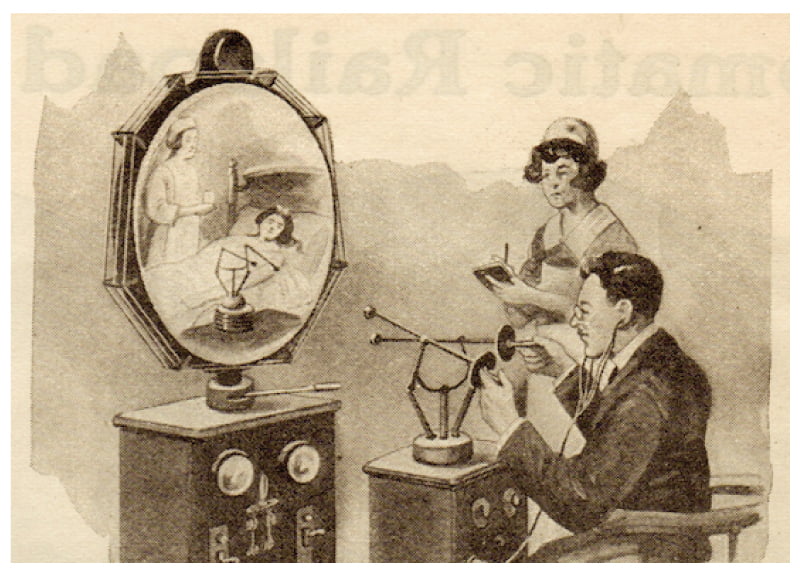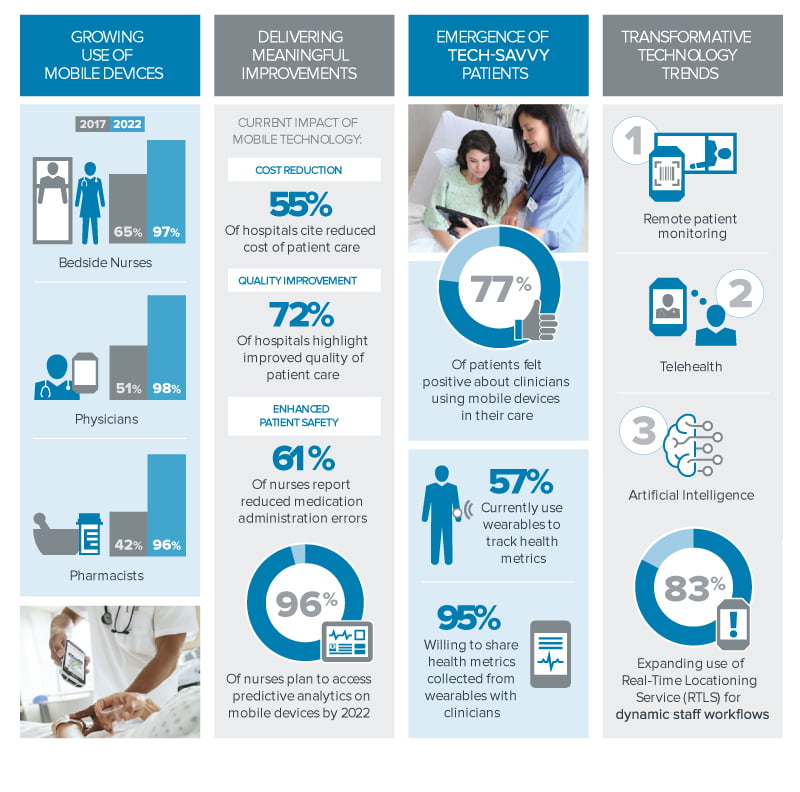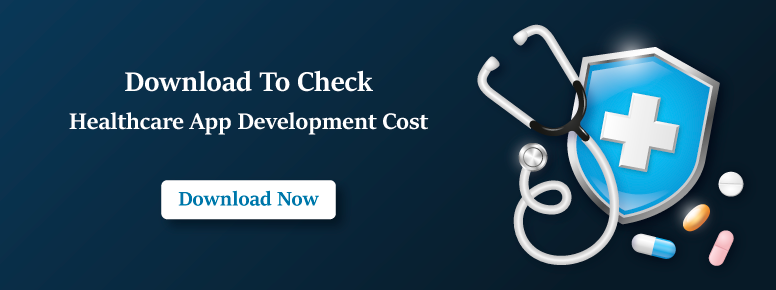In 1796, an English physician, Edward Jenner, successfully performed the first-ever smallpox vaccination on an eight-year-old lad, James Phipps, Telemedicine Apps.
In 1846, an American dentist, William T.G. Morton, became the first person to publicly prove “ether” as an anaesthetic for surgical use.
In 1954, the first-ever human organ transplant was performed by Joseph Murray and his team.
These three breakthroughs are enough to realise that the medical sector is fascinating and evolving every passing year. In the last couple of years, healthcare businesses have been implementing state of the art technologies within their existing health tech infrastructure. In 2020, when technologies like Artificial Intelligence, Machine Learning, and Augmented Reality are at their best implementation stage, the world of medicine is expecting to experience improved efficiency and availability.
The advancement in technology has contributed heavily to the development of telehealth services with most focus on telemedicine to allow remote patient monitoring, which is really needed in the times of Covid-19 pandemic. However, during this transition, many healthcare organisations still wonder how they can reap the benefits of technological advancements in the healthcare sector?And how does it happen? This article will cover both of these questions.
But first, What is Telemedicine and how does it differ from Telehealth?
Telehealth and Telemedicine Apps, you might have come across both these terms while reading about remote healthcare services or the marketing materials of some hospitals or clinics. Both of these fall within the Health Tech category, but in practice, both are significantly different from one another.
As per the definition by the US Health Resources Services Administration, Telehealth is utilising the electronic information and telecommunication technologies to make both clinical and non-clinical healthcare services such as providing online diagnosis and health-related education easily accessible. The health tech infrastructure have adopted Telehealth solutions ranging from wireless communication to video conferencing.
On the other hand, Telemedicine is a wider term that refers to the use of telecommunication technology to efficiently and effectively provide clinical services like conducting virtual doctor appointments or remote patient monitoring.
Mobile technology is the cornerstone for democratising and making Telemedicine affordable, so that even small healthcare setups can acquire and process sensitive medical data with user-friendly dashboards. Most importantly, it is possible for the health tech environment to comply with high-security standards of the healthcare industry like HIPAA.
A brief recap of how Telemedicine has evolved and Revolutionised Healthcare?
The history of Telemedicine doesn’t start in the recent past, it goes back to the 1920s when radio emerged as the major broadcasting medium for most of the American households. Back then, a Luxembourgish-American inventor, Hugo Gernsback thought of an idea for “Teledactyl”. Teledactyl was a device that not only allowed doctors to see their patients from a remote location, but also touched them from miles away using robotic arms.

Though, Teledactyl never came to life, still it is acknowledgeable that Hugo Gernsback predicted a future with Telemedicine quite accurately. However, Americans just had to wait another twenty years when the Telemedicine became practical. This time, a Canadian radiologist demonstrated the transmission of radiologic images between West Chester and Philadelphia using a telephone in 1948.
Up till now, Telemedicine technologies have come very far. Over time the equipment size is getting smaller, the scope of technology is getting more broad, but convenience and remain the main priority. Because of the Covid-19 outbreak, there was a boost in the growth of Telemedicine, with a sudden increase in the demand of remote patient monitoring. A study by Sermo in March 2020 told that 63 percent of the healthcare professionals now have experience in working with Telemedicine equipment. Amid Covid-19, 57 percent of the patients were treated remotely.
Types of Telemedicine Services
We can categorise Telemedicine services into three groups: real-time, store-and-forward, and remote patient monitoring.
1. Real-Time Telemedicine
When most people hear about Telemedicine in general, they mostly think about real-time Telemedicine where patients and doctors interact via video conferencing or text chatting. These types of Telemedicine apps are a perfect fit for general health assessments, screenings, and follow-up visits which won’t require advanced medical examinations. It is said that almost 3/4 of the doctor visits can be handled via real-time Telemedicine apps.
However, irrespective of their simplicity, the real-time Telehealth services are capable of replacing some of the traditional healthcare services. It has been realised that such apps can work for behavioural therapy sessions where it is essential to maintain doctor-patient relationships via constant communication.
2. Store-and-forward Telemedicine
Unlike the real-time telemedicine services, store-and-forward telehealth services don’t provide real-time personal interactions among users. Instead, it focuses on gathering the patient information like x-ray records, video recordings, reports, or prescriptions and sharing them with the medical specialist who is in charge of that particular patient.
In practice, the store-and-forward telemedicine services are more secure and sophisticated. It is popular among medical specialists who prefer having detailed evidence to treat patients. For example, these services are very helpful for dermatologists or radiologists, because just a video conference alone will not be suffice if one has to consult about skin itching.
3. Remote Patient Monitoring
Last but not least, there are applications that allow doctors to monitor the health status of patients remotely. These apps make use of IoMT devices (Internet of Medical Things) that help them track a patient’s vital health signs like respiration rate, pulse rate, or even blood pressure. With the advancement in sensor technology, there are several possibilities in which remote patient monitoring can make a significant difference in healthcare.
Real-time patient monitoring is currently being utilised in two scenarios. Firstly, when the patient is suffering from a chronic condition. Secondly, if they recently have been discharged from the hospital.
How to Develop a Telemedicine App?
Developing a telemedicine app is almost similar to developing any other app. However, some features, regulatory compliances, and user interface are the parameters where telemedicine apps are distinguished from other apps. We’ll talk about the feature list in the latter part of the article. But now we’ll discuss how to develop a telemedicine app?
Step 1 – Get a quote from Mobile App Developers
Picking the right mobile app developer for your telehealth mobile app isn’t very straightforward. The very common approach includes drafting an RFP (Request for Proposal), sending it to a couple of mobile app development companies and making decisions based on the responses received from the development companies.
You’ll pick the development service provider, which has the required proficiency and falls within your budget. Sometimes, you also have to stretch your budget a little bit to fit in someone who is more proficient in developing health tech mobile apps.
Step 2 – Decide the scope for your Telemedicine App MVP
After picking the right partner for your app development, you’ll have to fix the project scope. Now the development company will come up with technical architecture for your project and based on that you’ll be prioritising the feature list for the app. The development company will also help you draft the SoW (Statement of Work) document, which will outline the project scope and sprints in which the project will be executed.
Step 3 – App Development
Based on the SoW document, the development company will undertake the development. The development of a mobile app is completed in several steps like Wireframing, Prototyping, UI/UX designing, Back-end development, Front-end development, and Testing. During this time, you don’t have to spend much time tracking the performance of your development partner.
After development, the app goes through several testing phases that make sure that the app is at par with the project scope.
Step 4 – Launch the App
When the app is ready to launch, your marketing team will work with your development partnering company to prepare the app for final release. In this stage, you will make sure the discoverability of your app is on the app stores. There are certain steps your teams will follow to optimise your app for app stores.
Essential features of a Telemedicine Mobile App
While there can be several revolutionary features in a telemedicine app, here we are mentioning the feature set which is required for a telemedicine app MVP (Minimal Viable Product):
For Patients
The patient app should comprises of the following features to help them easily access medical services:
Sign-up and in
Every new user would be required to create their account to your app. While signing up the user will feed you with their personal and medical information, which your app will utilise to personalize their experience.
Searching Medical Specialist
The most crucial feature for a telemedicine app. The patients/users will need to look for a medical specialist to get consultancy. You can equip your app with a search feature, which will sort the medical specialist to the patents based on their geolocation preferences. This feature can sort the doctors based on their distance from the patient, or the sorting can be done based on the ratings the specialists have received on the app.
Book Appointments
Once the patient finds a suitable medical specialist, he or she will have to book an appointment. This feature of your patient app should be integrated with the doctor’s app. It will allow your app to show the patient the available time slots when the doctor is available.
Video Appointments
Video calls are a very essential feature for every telemedicine app. It enables patients and doctors to connect with each other via video calling. Implementing video calling features on telemedicine apps should be done keeping HIPAA compliances in consideration, so that the patient data is secure.
Payment
When the consultation is performed online, the payment should also process online. Your app should have integration with payment gateways to allow patients to pay the consultation fee via debit cards, credit cards, e-wallets, etc.
Ratings and Reviews
Every app that conducts online consultations, services or sells products really needs to have this feature, and telemedicine apps aren’t any exception. The patients should be able to rate and review the consultancy provided by the medical specialist. It will also help you to recommend the best consultants to your users.
For Doctors
The features that doctors will require will be quite different from the patient’s app. The doctor app features will be more like ERP features, such as appointment management, payment management, etc.
Doctor Dashboard
The doctors have to keep the medical history and records of their patients so that while consulting, they can refer to the historian. Therefore, your telemedicine app for doctors should contain and manage the patient medical records that are associated with each particular doctor. The records may include drug prescriptions, past appointments, etc.
Appointments Management
The patients book appointments from their end, while doctors have very low control over it. But your telemedicine app for doctors should allow them to pre-set the time slots of when they’ll be available. The doctors should have permission to accept or reject appointments based on their availability. They should also be able to request a reschedule for a specific time.
What does the Future hold for Telemedicine?
If you want to know what the future of telemedicine services will look like, the 2022 Hospital Vision Study by Zebra has the answers for you. The report shows that by 2022, 72 percent of the hospitals will be using mobile devices for medical purposes, while the number in 2020 is 36 percent. However, the change is already happening as the use of telemedicine is growing for the mean or clinical mobility.
 Source: Zebra
Source: Zebra
Conclusion
Telemedicine mobile app solutions exist to make medical consultation accessible even to the remote locations. In the times of Covid-19 when social distancing is advised, people are afraid to visit hospitals. Therefore telemedicine apps can improve the lives of both the patients and doctors.
If you have an telemedicine app idea in your mind and are looking for a mobile app development partner who can develop your app with a tight budget, whilst keeping the data security and user experience the foremost priority, you can connect with us by filling out a simple form – click here.

Niketan Sharma is the CTO of Nimble AppGenie, a prominent website and mobile app development company in the USA that is delivering excellence with a commitment to boosting business growth & maximizing customer satisfaction. He is a highly motivated individual who helps SMEs and startups grow in this dynamic market with the latest technology and innovation.
Table of Contents













No Comments